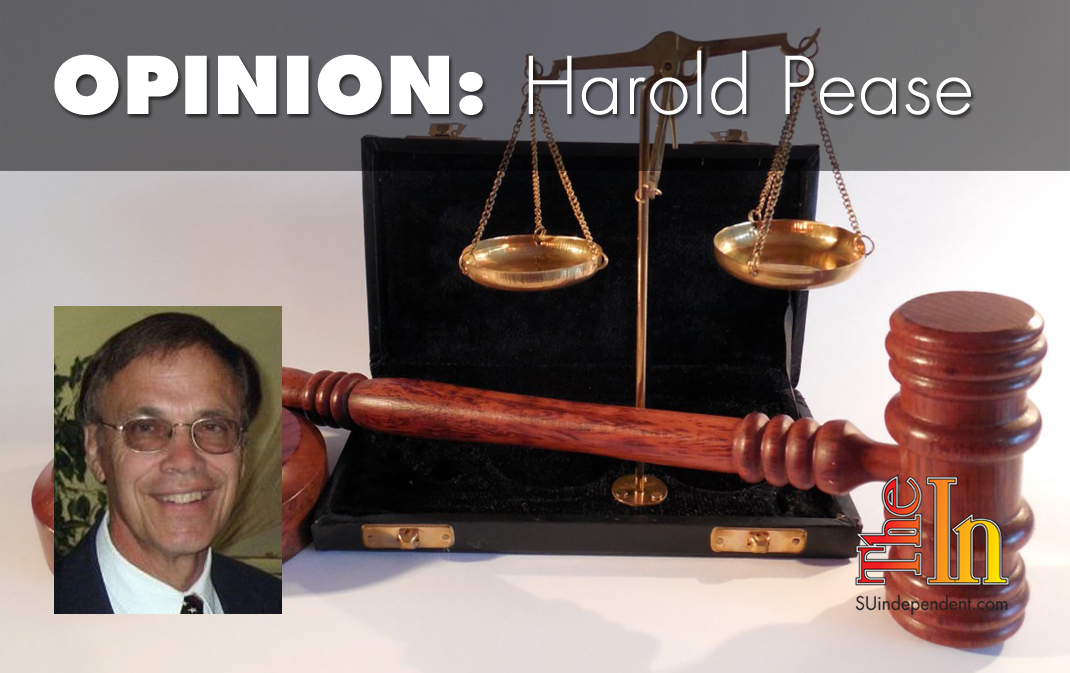 FISA, the government’s secret court, used on a president
FISA, the government’s secret court, used on a president
There has been much recent interest in the just released House Intel findings regarding the Trump dossier assembled by anti-Trump British spy Christopher Steele — from Russian disinformation and $160,000 paid by the Democratic National Convention and Clinton Campaign — as opposition research in a presidential election and alleging Putin/Trump collusion in the election. The dossier was used by the FBI and Obama Justice Department to get a warrant from the FISA Court to spy on the opposing Trump campaign to destroy Trump’s candidacy and, if elected president, to provide the ammunition to have him impeached thereafter. The Grassley-Graham Senate Intel Memo documents more fully the above.
All of this renews interest in the government’s secret FISA Court, long-time opposed to by constitutionalists, libertarians, and many democrats. Ironically, it was created as a response to President Richard Nixon’s usage of federal resources to spy on political activist groups during his tenure as president, which likely violated the Fourth Amendment of the Constitution. But it’s now apparently used by the Democratic Party to spy on a contending presidential candidate prior to and after his election — something far worse than Nixon’s Watergate.
Initiated by Democratic Senator Ted Kennedy and signed into law by Democratic President Jimmy Carter, the 1978 Foreign Intelligence Surveillance Act, or FISA, created this secret court with bipartisan support. The government’s surveillance of its own citizens was formerly, until now, opposed by most democrats and dates back 39 years. I told my students of this court for at least 33 years.
Ironically, the solution to Nixon’s spying on political activists groups was legalizing and extending it to individuals through FISA, a greater violation of the Fourth Amendment than before. Few voices opposed giving the government extra spy power during the “Cold War” when it seemed that the whole planet was falling under the influence of communism — but once legalized in 1978, the surveillance escalated.
Liberal CBS News commentator Dan Rather, in his “Eye on America,” was one of the first to speak out on the intricacies of this secret court. In 1994, he correctly argued that all federal courts are supposed to be open and that the Constitution has no place for secret courts. He opened, “Chances are you have never heard of this court, because it does operate in secret.” He said the FISA court “holds no public hearings, classifies its rulings top secret and has wide freedom to order domestic spying in the name of national security.” Alan Dershowitz, a defense attorney at the time, was cited as having said, “The idea of there being a secret court in America is so un-American and the end result is that the rights of American citizens are being violated by this court. What is at stake here is the liberty of the American people. Secrecy and liberty are incompatible.”
He continued, “Behind the stone walls of the Justice Department’s sixth floor, the court sits in an ultra-high security vault, guarded by impenetrable double doors. There, seven federal judges hear surveillance requests from the FBI, the CIA, and the Department of Defense. And it appears the court has never heard a request it didn’t like. Over the years, the government has asked for 7,500 surveillance warrants. The number refused by the court is zero. The government has never been denied.”
It gets worse. “Questions under FISA aren’t quite as tough as they are in even an ordinary criminal case,” he said. “In any other court for an ordinary surveillance warrant a judge must find that a suspect is involved in a crime. Under FISA the standard is lowered to ‘may be involved.’ An ordinary wiretap runs 90 days. FISA taps can last a year. A suspect under ordinary criminal surveillance ‘must be told’ about it eventually but not under FISA. And finally, if prosecuted, a defendant is never allowed to see the top-secret warrant applications used against him.” Ironically, the program concluded, all this is happening “in a windowless vault just beyond Constitution Avenue.”
The U.S.A. Patriot Act of 2001 increased the number of FISA Court judges to eleven, all appointed by the Chief Justice of the United States, none with congressional “advice or consent” as required by the Constitution, and each serving fixed terms of seven years. In court, only the Department of Justice is allowed to provide information. Appeals of their decisions are made to a three-judge panel, which has assembled only twice in its history. One reason is that the court does not inform those upon whom it spied — not even the president of the United States. If you do somehow find that you were spied upon, you cannot obtain the evidence from the FISA court that such actually happened.
Historically the court has approved 99.99 percent of the requests for spying. As of 2013, the secret court had reviewed 33,900 requests denying, in its then 35-year history, only 11. So much for oversight.
The names of the 11 current FISA Court justices can be found here should readers wish to ask the judges why they authorized four separate requests to spy on Trump’s campaign and presidency.
FISA power must end. If democrats can use the so-called justice system to authorize spying on a republican president as shown and there are not deterring high penalties for doing so, it is only a matter of time when the Republican Party will do something similar to a democratic president.
The viewpoints expressed above do not necessarily reflect those of The Independent.
Articles related to “FISA, the government’s secret court, used on a president”
How to submit an article, guest opinion piece, or letter to the editor to The Independent
Do you have something to say? Want your voice to be heard by thousands of readers? Send The Independent your letter to the editor or guest opinion piece. All submissions will be considered for publication by our editorial staff. If your letter or editorial is accepted, it will run on suindependent.com, and we’ll promote it through all of our social media channels. We may even decide to include it in our monthly print edition. Just follow our simple submission guidelines and make your voice heard:
—Submissions should be between 300 and 1,500 words.
—Submissions must be sent to editor@infowest.com as a .doc, .docx, .txt, or .rtf file.
—The subject line of the email containing your submission should read “Letter to the editor.”
—Attach your name to both the email and the document file (we don’t run anonymous letters).
—If you have a photo or image you’d like us to use and it’s in .jpg format, at least 1200 X 754 pixels large, and your intellectual property (you own the copyright), feel free to attach it as well, though we reserve the right to choose a different image.
—If you are on Twitter and would like a shout-out when your piece or letter is published, include that in your correspondence and we’ll give you a mention at the time of publication.



